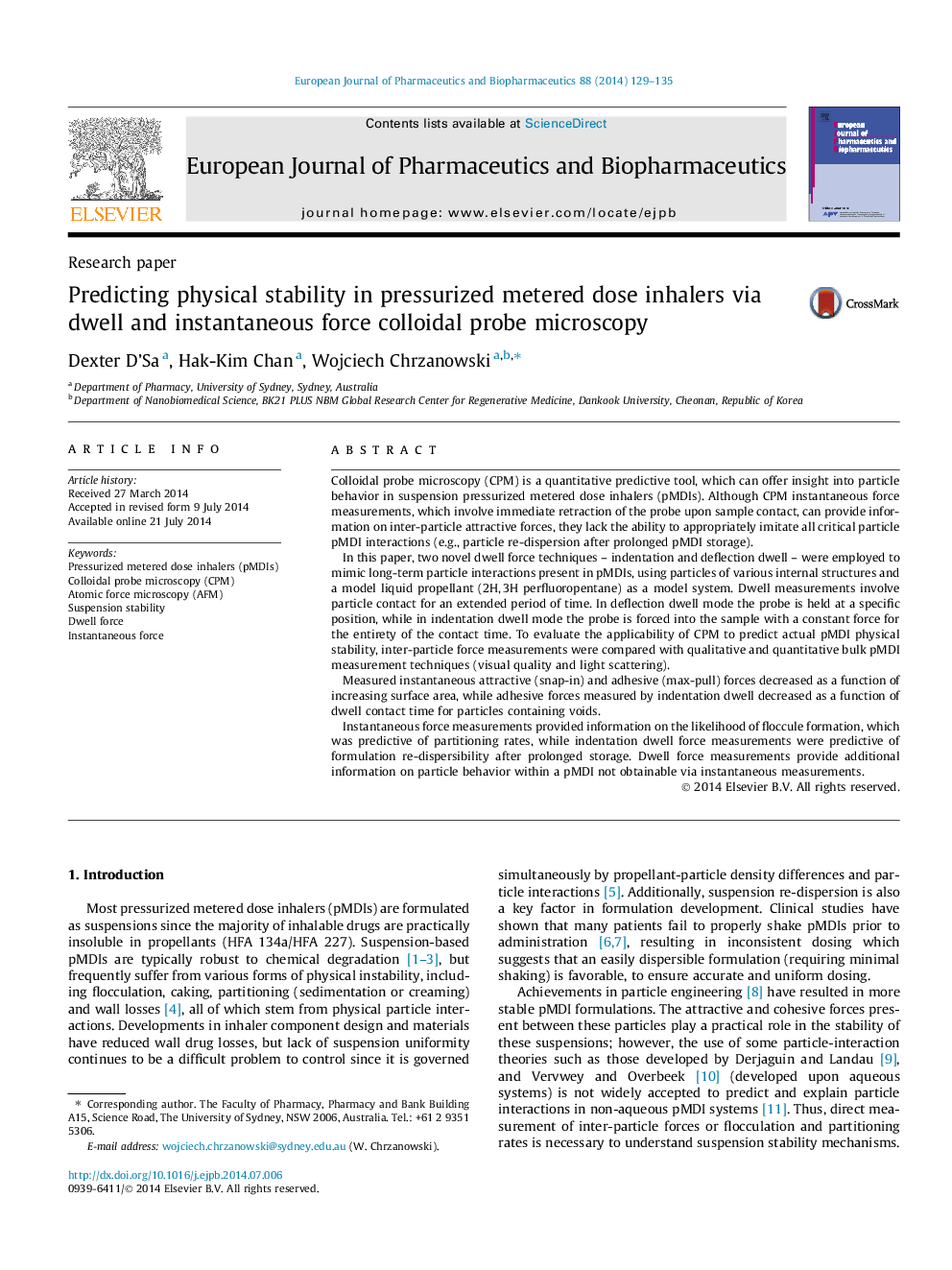| کد مقاله | کد نشریه | سال انتشار | مقاله انگلیسی | نسخه تمام متن |
|---|---|---|---|---|
| 2083592 | 1545339 | 2014 | 7 صفحه PDF | دانلود رایگان |
Colloidal probe microscopy (CPM) is a quantitative predictive tool, which can offer insight into particle behavior in suspension pressurized metered dose inhalers (pMDIs). Although CPM instantaneous force measurements, which involve immediate retraction of the probe upon sample contact, can provide information on inter-particle attractive forces, they lack the ability to appropriately imitate all critical particle pMDI interactions (e.g., particle re-dispersion after prolonged pMDI storage).In this paper, two novel dwell force techniques – indentation and deflection dwell – were employed to mimic long-term particle interactions present in pMDIs, using particles of various internal structures and a model liquid propellant (2H, 3H perfluoropentane) as a model system. Dwell measurements involve particle contact for an extended period of time. In deflection dwell mode the probe is held at a specific position, while in indentation dwell mode the probe is forced into the sample with a constant force for the entirety of the contact time. To evaluate the applicability of CPM to predict actual pMDI physical stability, inter-particle force measurements were compared with qualitative and quantitative bulk pMDI measurement techniques (visual quality and light scattering).Measured instantaneous attractive (snap-in) and adhesive (max-pull) forces decreased as a function of increasing surface area, while adhesive forces measured by indentation dwell decreased as a function of dwell contact time for particles containing voids.Instantaneous force measurements provided information on the likelihood of floccule formation, which was predictive of partitioning rates, while indentation dwell force measurements were predictive of formulation re-dispersibility after prolonged storage. Dwell force measurements provide additional information on particle behavior within a pMDI not obtainable via instantaneous measurements.
Figure optionsDownload high-quality image (59 K)Download as PowerPoint slide
Journal: European Journal of Pharmaceutics and Biopharmaceutics - Volume 88, Issue 1, September 2014, Pages 129–135
